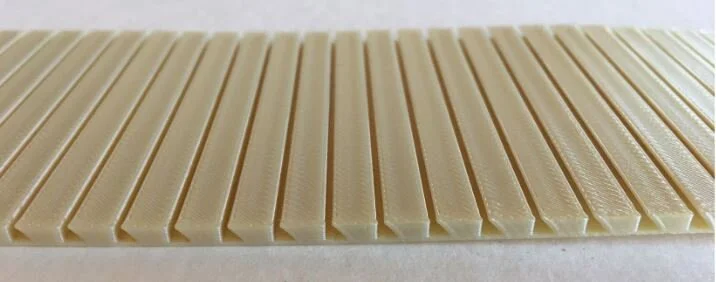As a research fellow at Los Alamos National Lab with the Los Alamos Summer Dynamics school, I researched neutron radiation detecting Optically Simulated Luminesce (OSL) fibers. Variations in the OSL fibers were tested in Monte Carlo N-particle (MCNP) software to determine the optimal configuration for neutron capture and detector efficiency.
Variations in the fiber core size, moderator size, and moderator material were tested under various neutron radiation sources, including a neutron point source and AmLi and Californium source spectrums. To do this, a Python script was written to create new simulation files to run on MCNP. Given this data, ideal moderator material and size, as well as the fiber core size, were determined for applications in a wearable textile format.
These fibers are different from personal neutron detecting radiation dosimeters in that they do not require power, need to be hard-wired, rely on the direction of radiation dose for accuracy, have limited lifetimes or need to be recalibrated often, have significant time delay between recorded dose and feedback, and they are reusable, provide feedback as often as is needed, can store dose data, and can potentially be used for spatial dose information.
The ultimate goal of this research is for the fibers to be used in a wearable textile format, such as a glove for a glove box or something that covered more body mass, like a suit. The positives of using a woven textile format is the ability to pinpoint where in the textile there is the most radiation. With this information, a wall or building could be wrapped in the textile, with different regions showing where the most radiation is.
Our resulting published work on this research can be found here, or under the title Simulated Optimization of Neutron Detection in Optically Stimulated Luminescence Fibers.
[1] Gong, Z.; Xiang, Z.; OuYang, X.; Zhang, J.; Lau, N.; Zhou, J.; Chan, C.C. Wearable Fiber Optic Technology Based on Smart Textile: A Review. Materials 2019, 12, 3311














![Solenoid Device [1]](https://images.squarespace-cdn.com/content/v1/5da749dba030e850c2307efa/1693168570340-D444IE7EPZFTEJ4QDVXU/Figure18.jpg)
![Solenoid Device Circuit [1]](https://images.squarespace-cdn.com/content/v1/5da749dba030e850c2307efa/1693168570310-A62U10P8TSWGZTHI26D6/Figure19.jpg)




![Example of potential textile weaving pattern [1]](https://images.squarespace-cdn.com/content/v1/5da749dba030e850c2307efa/1607338936879-J77WKERSGC4I0OSMPAZY/Capture-6.JPG)
![How the OSL fibers detect radiation dose through characteristic emergent light [1]](https://images.squarespace-cdn.com/content/v1/5da749dba030e850c2307efa/1607338854479-AJFQ71L5BLG3SERO3EUC/Capture-3.JPG)











